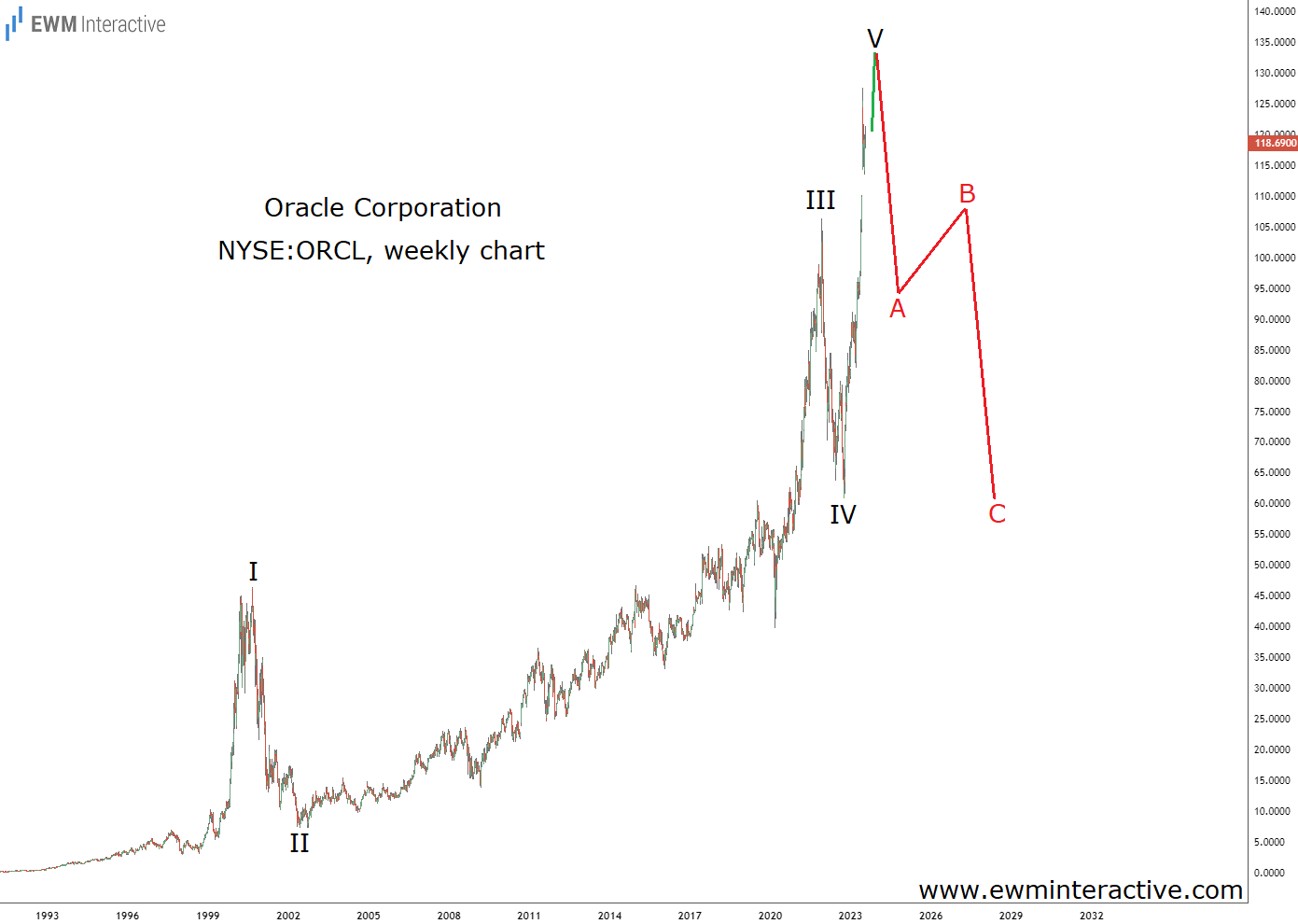Micron shares surge amid sharply higher revenue forecasts on AI-led memory demand
Oracle Corporation (NYSE:ORCL) just wrapped up its fiscal year ending May, 2023, recording total revenue of nearly $50B. Along with Nvidia (NASDAQ:NVDA) and Microsoft (NASDAQ:MSFT), Oracle is another member of the Big Tech family whose share price has recently benefitted from the AI hype. In fact, the stock more than doubled between October, 2022, and mid-June, 2023.
The company doesn’t shy away from touting its artificial intelligence capabilities. It mentioned AI 17 times in its latest earnings call, saying that its “exploding AI demand” leaves it “significant upside.” Students of financial markets history know that Wall Street doesn’t need much to get overexcited about a fancy new technology. So when the CEO of a major corporation starts using words like “exploding”, investors better be careful.
There’s nothing wrong with being optimistic about your company’s prospects. Responsible CEOs, however, prefer to err on the side of caution. After all, it took Oracle stock 17 years just to recoup its Dot-com crash losses. The exciting new technology back then was the internet. And it actually did deliver a real revolution in the early-21st century. Nevertheless, bubble-era Oracle investors did poorly throughout it all. We think they are making the same mistake now with AI.

Oracle Corporation (NYSE:ORCL) went public in 1986. Despite the 84% dot-com crash and the 43% correction in 2022, the stock has generally been in an uptrend for 37 years now. That uptrend, however, seems to be on the verge of completing a five-wave impulse pattern. We’ve marked it I-II-III-IV-V, where the 2001-2002 and the 2022 selloffs fit in the positions of waves II and IV, respectively.
The problem for the bulls is that the Elliott Wave theory states that a three-wave correction follows every impulse. Furthermore, it usually erases the entire fifth wave. Applying this to the weekly chart of Oracle leads us to conclude that once wave V is over, the stock may roughly halve. A decline from over $130 to the $60s looks likely.
Not to mention that the company is expected to make just $5.6 per share this year. Given the very high probability of a 2024 recession, it might turn out that Oracle is trading at 21 times peak-cycle earnings. That’s a demanding multiple no matter how you slice it.
The alternative is, of course, that we’re wrong and that “this time it is different” thanks to AI. We wouldn’t bet on it, though. After all, the Dot-com crash itself was also preceded by a five-wave impulse pattern. Take a look.

The weekly logarithmic chart allows us to see the five-wave structure of wave I, which culminated in the Dot-com bubble. It is labeled (1)-(2)-(3)-(4)-(5) and means that the following crash, albeit spectacular, was nothing more than a natural wave II correction. The Dot-com plunge dragged Oracle stock down from $46.47 to $7.25, erasing most of the gains made by wave (5) of I.
History never repeats itself, but if this analysis is correct, it is about to rhyme once again soon.
